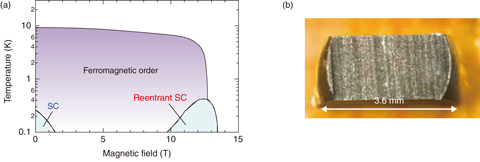
Fig.3-2 Phase diagram of URhGe under a magnetic field and a single crystal prepared for NMR measurements

Fig.3-3 The mechanism of reentrant superconductivity induced by strong magnetic fields (a schematic view)
Magnetic fields are incompatible in general with superconductivity. All superconductors possess an upper critical field above which superconductivity is completely suppressed. Therefore, the development of superconducting materials with higher upper critical fields has been a central issue in the industrial production of electrical wires and superconducting magnets. Recently, however, a field-induced reentrant superconductivity was discovered under strong magnetic fields in the uranium-based compound URhGe. In this compound, the applied magnetic field first suppresses superconductivity around 2 T, but then the reentrant superconducting phase appears between 10 and 14 T (Fig.3-2(a)). This unusual phenomenon tells us that the magnetic field is not always incompatible with superconductivity but can help its emergence in some cases. The existence of a novel superconducting mechanism is thus expected in URhGe, and might be available for the development of new superconducting devices controlled by strong magnetic fields.
To microscopically investigate the mechanism of reentrant superconductivity, we prepared a 10% Co-doped URhGe single crystal (Fig.3-2(b)) and performed Co nuclear-magnetic resonance (NMR) experiments using a strong magnet installed at the French National High Magnetic Field Laboratory (the maximum field of which is 34 T). The NMR experiments revealed the rapid increase of magnetic fluctuations of uranium 5f spin moments in the field region of 10–14 T, where reentrant superconductivity was observed. This provides strong evidence that superconductivity in URhGe is mediated by the magnetic fluctuations, and further, that reentrant superconductivity occurs owing to the enhancement of these fluctuations under strong magnetic fields (Fig.3-3).
Since the superconducting transition temperature of URhGe is very low, less than 1 K (−272°C), it might be difficult to use it for industrial applications immediately. However, understanding of the mechanism behind reentrant superconductivity certainly increases our knowledge-base for developing new superconducting materials and devices working under strong magnetic fields. It is also important to notice that, so far, the reentrant superconductivity mediated by magnetic fluctuations has been discovered only in uranium-based compounds. This implies the crucial role of uranium-5f electrons in the occurrence of this exotic phenomenon. Further investigations are necessary to understand the complex and interesting nature of superconductivity and magnetism in uranium-based compounds.
Our research was accomplished as a collaborative study with the Tohoku University, and supported by the Japan Society for the Promotion of Science (JSPS) KAKENHI Grant-in-Aid for Scientific Research (C) (No.26400375).